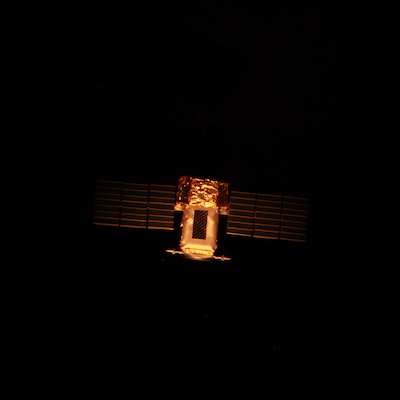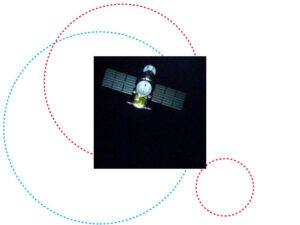In sci-fi movies autonomous droids’ shuttle across space to supply and service vehicles and space-stations. But before this long-term aspiration can be achieved, spacecraft need to be able to identify the objects with which they interact, as well as avoiding potentially damaging debris. Detecting the nature and trajectory of objects enables evasive action to be taken, and intelligent systems to undertake refuelling and docking manoeuvres.
This identification is already being worked on, as just over a year ago a research team here at SnT, led by Prof. Djamila Aouada, partnered with the space start-up LIFT ME OFF (LMO). Together they are working towards using intelligent visual recognition systems backed with machine learning algorithms to identify and monitor objects automatically in space. They have achieved much even in their first year.
The first step of the project they tackled was to develop and test an algorithm that could be used to detect and identify satellites in space. This is crucial in order to conduct refuelling or repair missions on these valuable in-orbit assets. The research team was able to succeed in this goal in six months, having created an algorithm that works both in the complete darkness of space as well as with the illumination of planet earth in the background.
While work progressed with the SnT team in Luxembourg, LMO also became a participant in the UK Space Agency (UKSA) project for advancing Space Surveillance and Tracking (SST). In this programme with the UKSA, LMO is looking at the potential applications of their technology together with how it could be mounted and used in potential missions. Because of this project, LMO and the SnT team had the opportunity to test the algorithm with a physical environment, with even better results than expected. From 30 km away the algorithm was able to detect differences between satellites that the human eye could not, identifying different spacecraft with a high accuracy.
“We couldn’t be happier with the results of our work with SnT when tested in the simulated environment. This is a crucial step to achieving the same results in-orbit,” said Michel Poucet, CEO of LMO. “LMO is fortunate to be able to participate in the UKSA project, as it allows us to delve even deeper into the potential applications of our technology. The support on the ground at Harwell campus, where the project is located, also helps us thrive. For these particular tests we worked with the local MDA team, who kindly helped us to build up the physical environment.”

Satellite model and environment used for testing the algorithm
Now having achieved such a significant research breakthrough, the ball gets tossed back to Prof. Aouada’s team, to refine the algorithm to be compatible with space worthy hardware. “Currently the algorithm requires a lot of computing power, and that isn’t possible in space where resources are extremely limited, so we will have to refine it. You could say get it to fit into a smaller box,” said Prof. Aouada. The computers used on Earth are not the same as those used in space because when something is launched into space it has to be hardy enough to withstand launch, radiation, and other harsh environmental conditions. At the same time it needs to live a long life, as the repair shop is not just around the corner.
That is only one of the next challenges the project will tackle, as the researchers begin to diversify their work on the project. And thanks to a recent BRIDGES grant from the Luxembourg National Research Fund (FNR), the next step of spacecraft pose estimation will be well-supported. In turn, LMO is increasing their team in their recently opened offices in Technoport. “We hope to hire three more people this year to join us here in Luxembourg to tackle the next steps of the project,” said Poucet. “Our collaboration with Prof. Aouada’s team is one of the most successful working partnerships we have, particularly in terms of the working styles we share.”
As LMO and SnT move forward together, the project outputs are expected to continue to inform and provide a testing ground for the research and technology being developed in Luxembourg. In addition, the cross-channel combination, thanks to LMO’s work with the UKSA, provides a powerful system of innovation, progressing the science in Luxembourg and exploring future applications for the UKSA and other Commercial and Government customers.
“This kind of cutting edge, cross-border, multi-disciplinary project is in SnT’s DNA,” said Prof. Björn Ottersten, Director of SnT. “Our first ‘New Space’ partnership with LMO last year is a milestone for us, and we are pleased with the success of this collaborative research project given the growing importance of this sector at the national, European, and global levels.”
